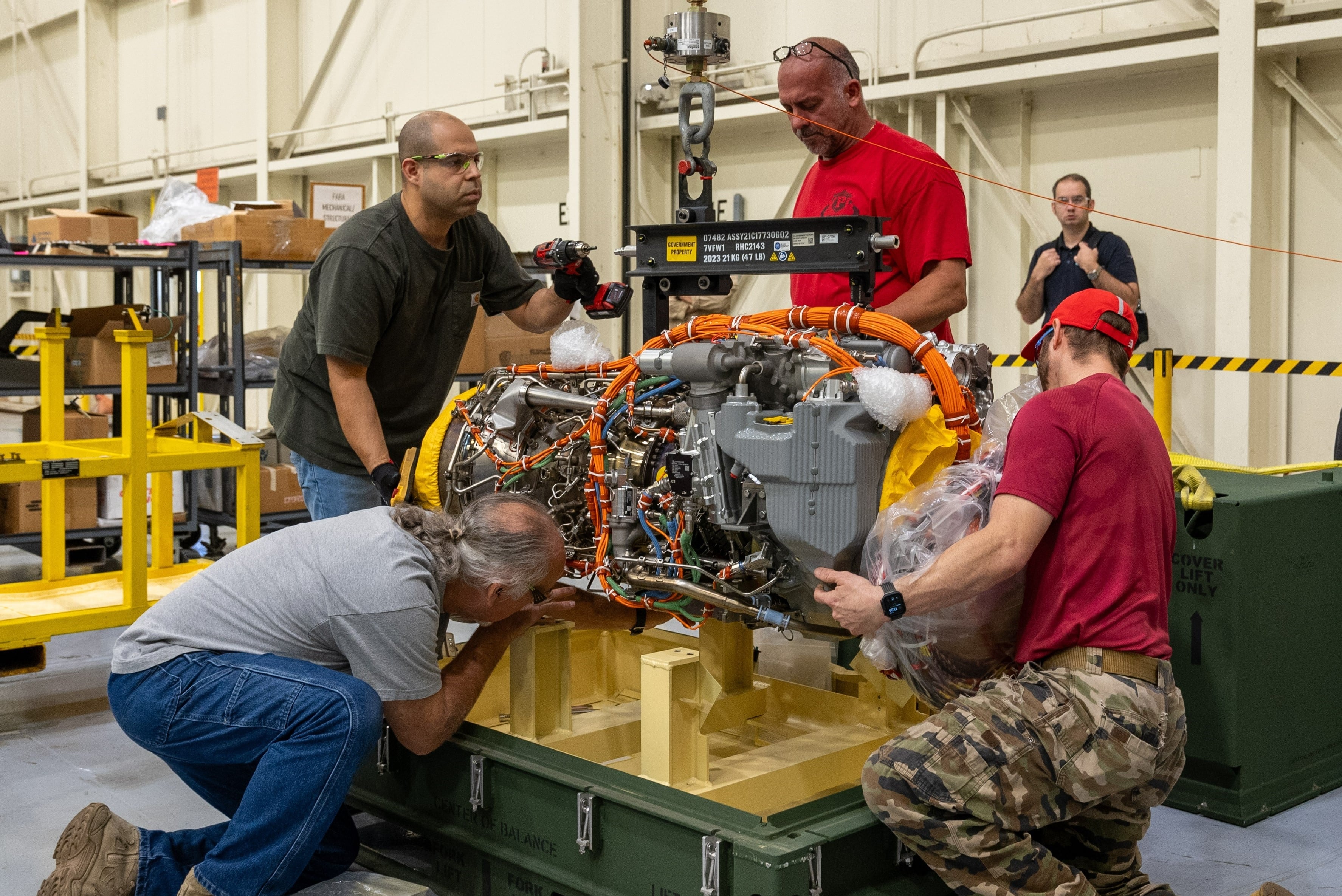
New US Army helo engine lifts off, but may be headed for cancellation
After roughly $1.5 billion spent over two decades, the future of the U.S. Army's Improved Turbine Engine Program is in question.
By Jen Judson



The U.S. Army has not yet terminated the Improved Turbine Engine Program despite the service proposing to end the program as part of its major transformation initiative laid out in May.
While the service continues to look at different courses of action with the program, it has continued its testing program. The Army had already installed the General Electric-designed engine, designed to replace all the engines in both UH-60 Black Hawk and AH-64 Apache helicopters, into a Black Hawk at Sikorsky’s facility in West Palm Beach, Florida.
The aircraft first flew in May with the new engine and has since been tested in forward flight at up to 4,000 feet, Brig. Gen. David Phillips, the Army program executive officer for aviation told Defense News in a recent interview.
“The aircraft and the engine are performing as advertised,” he said.

The Army is building off of this performance and is using funding already in the program line to execute testing on the Black Hawk and in ground chambers, Phillips noted. There is also the possibility Congress may provide additional funding for the test program in the fiscal 2026 budget.
If that funding is applied, “we’re going to continue the effort to get the engine qualified on the Black Hawk,” Phillips said.
The engine’s future is uncertain following the release of an Army directive in May outlining sweeping changes to the service. Dubbed the Army Transformation Initiative, the effort seeks to cut programs to make way for the pursuit of what it sees as higher priorities.
The ITEP program kicked off in a competition 15 years ago, but the engine effort has been plagued by various delays across its life as the service wrestled with funding, development strategies and a protest from the Advanced Turbine Engine Company — a Honeywell and Pratt & Whitney team, which competed against General Electric’s aerospace division to build the engine for the Army.
More recently, the engine was hit with more delays due to technical issues as well as the COVID-19 pandemic, which caused supply chain problems.
When GE won the contract, it touted a plan to move more quickly, but that window to accelerate closed and the Army subsequently predicted a two-year delay getting the T901 engine into the UH-60 Black Hawk, the first aircraft in the current fleet to receive the new tech.
The Army was able to garner some important data when it chose to integrate the ITEP onto two competitive prototypes for the Future Attack Reconnaissance Aircraft. The companies in that competition – Bell and Sikorsky – had both received the engines and were installing them when the service decided to cancel the FARA program early last year.
When the service canceled the FARA pursuit, it also delayed a production decision for the ITEP engine by three years.
The Army is also focused on other key improvements for the Black Hawk and Apache including common cockpit architecture, launched effects integration, next-generation command-and-control and other sustainment efforts that will keep the aircraft flying affordably into the future, according to Phillips.
Additionally, the Apache has airframe improvement efforts ongoing such as the improved tail rotor blade program.
The service “is making sure that we can interoperate that airspace,” Phillips said, “with the best manned and unmanned team solutions that we can field, so with all those efforts going on with the Black Hawk and Apache, it’s really brought into clear focus the thing that we need to focus on to be able to keep them lethal on the battlefield.”
Jen Judson is an award-winning journalist covering land warfare for Defense News. She has also worked for Politico and Inside Defense. She holds a Master of Science degree in journalism from Boston University and a Bachelor of Arts degree from Kenyon College.